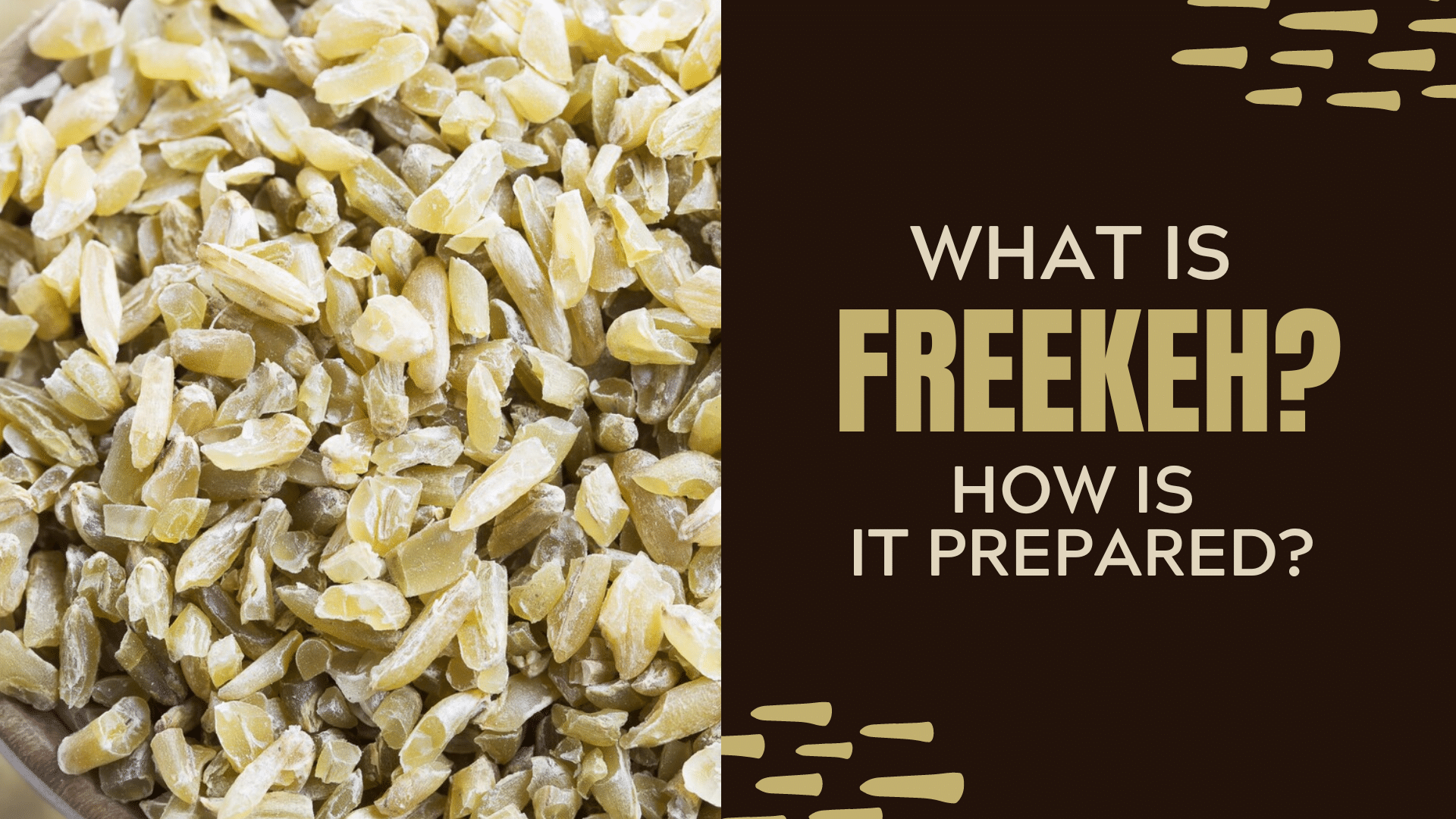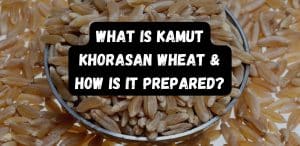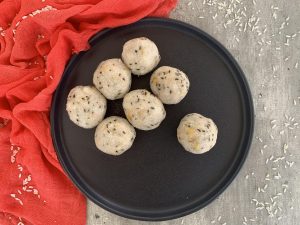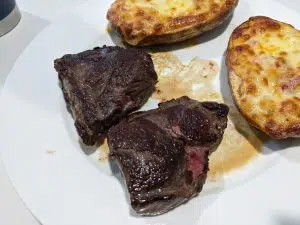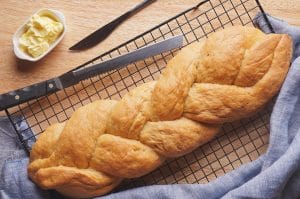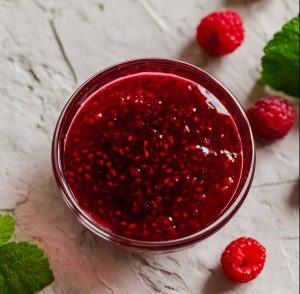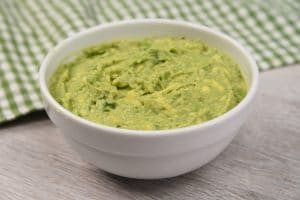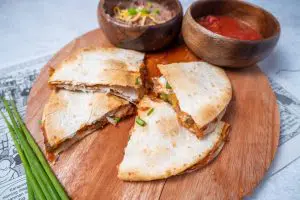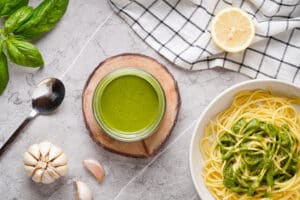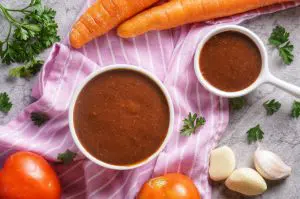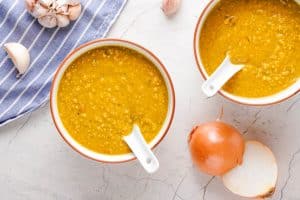What Is Freekeh & How Is It Prepared?
Important Note: When you buy through our links, we may earn a commission. As an Amazon Associate we earn from qualifying purchases. Content, pricing, offers and availability are subject to change at any time - more info.
The whole grain freekeh is recently a new trend among mainstream American foodies. Hailing from North Africa and the Middle East, this ancient grain has been consumed for centuries, especially in Egypt and southern Lebanon. However, what is this ancient grain that mainstreamers keep raving about, and how do you prepare it?
Freekeh is an ancient nutritional grain made by roasting young, green durum wheat grains. To prepare Freekeh, cover 1 cup of dry grains with 2½ cups of water or broth and bring it to a boil. Now, reduce the heat and allow it to simmer for 45 minutes. Cover the pot for 10 minutes before serving.
Although a pivotal grain in Middle-Eastern and North African cuisines, Freekeh is only recently gaining popularity in the States. Let’s find out why people are increasingly gravitating toward this ancient grain.
- What Is Freekeh?
- Freekeh Variations
- What Does Freekeh Taste Like?
- Is Freekeh Healthy?
- Is Freekeh Gluten-Free?
- How To Prepare Freekeh?
- Does Freekeh Need To Be Pre-Soaked Before Cooking?
- How To Serve Freekeh?
- How To Store Freekeh Correctly?
- It’s Worth Getting Accustomed To Freekeh
What Is Freekeh?
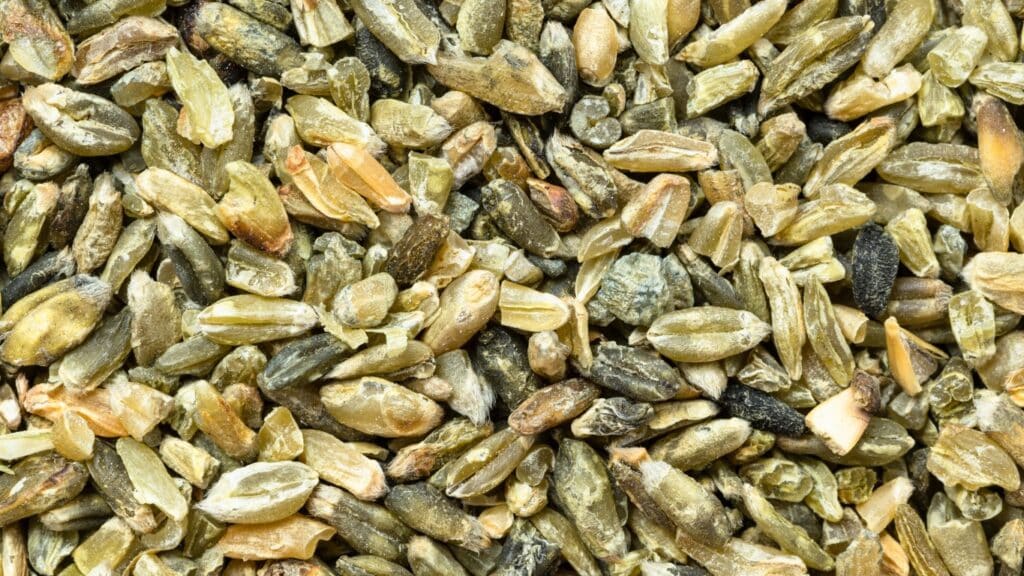
In short, Freekeh (pronounced free-kah) is an ancient grain and a type of wheat. You can compare this whole grain to Farro, Bulgar, or Sorghum.
Ancient grains, including Freekeh, have been largely unchanged over the last several hundred years. As a result, these grains are far more nutritious than their refined, modern-day counterparts.
The term Freekeh comes from the Arabic word farak, meaning “to rub.” The term does not refer to the plant but rather the production process.
Growers harvest young, green durum wheat before it ripens. They then burn the stalks over an open fire to remove the chaff. After smoking, some moist juvenile grains survive the fire, and the vigorous “rubbing” or threshing of the stalks release now toasty green kernels.
Freekeh Variations
You can find Freekeh in various forms, including:
- Whole: As the name suggests, whole Freekeh is, well, whole! This version features full Freekeh grains with a smoother texture and similar taste to cracked Freekeh.
- Cracked: Cracked Freekah is simply whole Freekeh grains “cracked” or broken up into smaller pieces. Cracked Freekah delivers a coarser texture, but it cooks much faster!
What Does Freekeh Taste Like?

Freekeh grains have a firm, slightly chewy texture with a unique flavor profile wandering between earthy, nutty, and slightly smoky notes.
The smoky flavors differentiate Freekeh from other wheat products like Bulgur or Wheat Berries. However, it exhibits similar nutty hints and a chewy texture.
Freekeh is also available in pre-seasoned flavors like tamari, rosemary, or sage.
Freekeh is the perfect replacement for rice and pasta or an alternative to the grassy quinoa flavors. Aside from tasting delicious, Freekeh is a nutrient powerhouse (we’ll get to that shortly) that may have the upper hand over your everyday go-to grains.
This whole grain is considered a culinary staple in the Middle East and North Africa. It is often prepared in various dishes like pilafs, soups, stews, salads, and stuffing.
Some traditional pairings include Freekeh Tabbouleh, a famous Middle Eastern salad, Firik Pilavi, a Turkish pilaf, or Freekeh Lahma, a Jordan dish that combines Freekeh with delicious lamb shanks.
Is Freekeh Healthy?
When deep diving into the nutrition qualities of Freekeh, there’s no question that this ancient grain has the upper hand over other varieties, like Farro, Millet, Bulgar, and even outperforms Quinoa (yup, seriously).
This top-tier grain is an absolute nutrient powerhouse because it’s harvested while the grains aren’t fully mature.
Here’s a quick run-through of the nutrients present in a 1/4-cup (40-gram) uncooked Freekeh serving:
- Calories: 141
- Carbs: 24 grams
- Protein: 5 grams
- Fiber: 4.5 grams
- Fat: 2 grams
- Manganese: 52% of the RDI
- Copper: 24% of the RDI
- Vitamin B3 (Niacin): 18% of the RDI
- Phosphorus: 16% of the RDI
- Zinc: 15% of the RDI
- Magnesium: 13% of the RDI
- Vitamin B6: 9% of the RDI
Freekeh has an exceptionally high fiber and protein content. Compared to Quinoa, Freekeh boasts five times the fiber and double the protein.
Freekeh is an ideal dietary addition for anyone focused on shedding several pounds. It has a low fat content and high fiber and protein percentages.
Fiber and protein are known to keep you feeling fuller for longer. In addition, fiber is an essential nutrient to help promote digestion and protect you from other conditions, including hemorrhoids, diverticulitis, and colorectal cancer.
The hearty protein dose can help support weight loss by boosting your metabolism and altering the levels of hormones that specifically affect your hunger.
Like other whole grains, Freekeh is a reliable starchy carbohydrate that will help replace your replenished energy stores after training. This carb and protein combo is an excellent addition to bolster muscle recovery. However, avoid eating Freekeh as a pre-workout fuel source due to the high fiber content.
Then, Freekeh includes a range of micronutrients and antioxidants that can benefit heart health. In addition, it can help reduce inflammation, cholesterol, high blood pressure, and heart diseases.
Freekeh is exceptionally high in manganese, a mineral that promotes healthy bone formation and boosts overall immunity. Then, it contains phosphorus, a key component of healthy bones and teeth, and energy production. The magnesium source is essential in regulating blood sugar and blood pressure and maintaining nerve and muscle function.
Freekeh has a relatively low glycemic index. As a result, it won’t cause your blood sugar to soar with a sudden fatigue-inducing drop follow-up.
Potential Downsides of Freekeh
Although Freekeh is chock full of nutritional benefits, several downsides may be worth noting.
For starters, Freekeh isn’t a match for gluten-free individuals. Freekeh is a type of wheat and contains gluten. For this reason, individuals with celiac disease, gluten ataxia, or a similar gluten-related sensitivity should avoid eating this grain.
Freekeh is quickly gaining popularity, seeping into trendy restaurant menus and health food stores. While this grain needs to be clearly called out as wheat, many food stores aren’t doing this. In addition, Freekeh is touted as “the new quinoa.” So, many gluten-free followers jump to the conclusion that Freekeh is also gluten-free.
However, Freekeh is far from gluten-free. Therefore, gluten-sensitive individuals need to watch out for Freekeh in ready-made dishes. Scan for Freekeh in rice pilafs, risottos, stews, salads, and soups.
Note: Freekeh can also be called freekeh, frikeh, farik, or fireek.
Then, Freekeh might not suit specific diet patterns, including the paleo or ketogenic diets, which aim to exclude most grain types.
Lastly, if you aren’t used to eating fiber-rich foods, you can experience bloating, cramps, gas, or diarrhea after consuming large amounts of Freekeh. As such, aim to increase your fiber intake gradually.
Is Freekeh Gluten-Free?
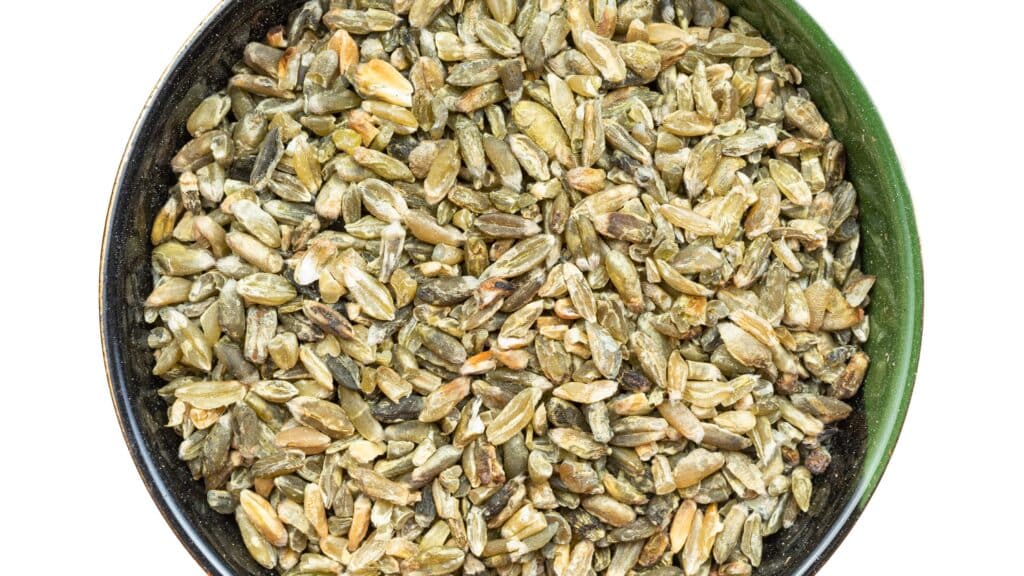
Freekeh is not gluten-free. This ancient grain is made from young durum wheat grains containing gluten.
However, Freekeh is believed to be easier to digest than common wheat products for those with mild gluten sensitivity. This is because the harvesting and processing methods denature the gluten and enzyme structure of the final product.
Nevertheless, it’s vital to understand that gluten research in Freekeh is preliminary. So, if you have gluten allergies, consult your dietician or doctor before trying it. In addition, those with celiac disease or similar gluten-related conditions should avoid eating all gluten sources, including Freekeh.
Gluten-Free Alternatives To Freekeh
If you have recipes that include freekeh and want to substitute it with a gluten-free grain, you can experiment with long-grain white rice, Quinoa, or wild rice.
You can prepare the gluten-free grain product as you would usually. Then, add it to your recipe as you would with the Freekeh.
How To Prepare Freekeh?
Freekeh is a versatile grain that is fortunately straightforward to prepare.
Freekeh is prepared the same way as Quinoa or rice. Simply take the Freekeh grains, add some liquid (water or broth), and cook on the stove!
Whole Freekeh grains take around 45 to 50 minutes to cook. However, their commonly available, cracked counterparts take half the time to prepare without losing the nutritional content of the whole grain.
To make Freekeh on the stove:
- Generously cover the grains with water or broth and bring them to a boil on the stovetop. Aim to use a tad more than the usual 2:1 liquid to grain ratio. So, around 2½ cups liquid for every 1 cup Freekeh. 1 cup uncooked Freekeh yields approximately 3 cups cooked.
- Then, reduce the heat and allow the Freekeh to simmer for 45 to 50 minutes. Cracked Freekeh will take around 20 to 25 minutes.
- Cover the pot and leave it for 5 to 10 minutes to soak up the extra moisture. Drain the excess water if necessary.
- Fluff the Freekeh with a fork before serving.
To make Freekeh in a pressure cooker:
- If you prefer speeding things up, pop 1⅔ cups liquid for every 1 cup dry Freekeh into the pressure cooker.
- Set the “multigrain” and “high pressure” settings.
- Cook the Freekeh for 10 minutes.
- After cooking, let the pressure release naturally.
- Drain the excess liquid and serve
However, we suggest following the cooking recommendations of the brand you purchased as the instructions may differ slightly.
Does Freekeh Need To Be Pre-Soaked Before Cooking?
Whole and cracked Freekeh does not require pre-soaking. However, soaking the grains overnight can shorten their cooking time.
If you soak the Freekeh overnight, reduce the cooking time by 10 minutes.
After cooking the Freekeh, cover the pot and leave it for 5 to 10 minutes to absorb any remaining moisture before serving.
How To Serve Freekeh?
You can enjoy Freekeh hot or cold, depending on your preference. In addition, you can serve this versatile grain with a wide range of seasonings or sauces.
Freekeh is an excellent replacement for nearly any whole grain, including rice, Bulgur, or Quinoa.
My favorite way to incorporate Freekeh into my diet is to toss it into a herb salad with chickpeas, red onion, and feta cheese. Then finish it with olive oil, lemon juice, and garlic dressing – hmmm, yum!
Here are eight tips on adding this rich protein and fiber source to your diet:
- Grain Salads: Grain salads offer an all-in-one balance meal. You can toss cooked Freekeh into a mixture of leafy greens, some veggies, creamy cheese, and healthy fat like avocado, olive oil, or tahini.
- Stews: Use Freekeh as a base for your favorite stew. This protein powerhouse will give your stews an exciting, drool-worthy flair while leaving you satisfied and full for longer.
- Soups: You can take the traditional route and whip up a Lebanese-inspired chicken Freekeh soup. Or you can add Freekah to add body and a hint of smokiness to less traditional soup recipes.
- Pilafs: You can play with various Freekeh pilaf flavors to add a healthy side to your meal as an alternative to everyday rice.
- Vegetable Stuffing: Using Freekeh as a veggie stuffing is a great way to show off the ancient grain. Some of my favorite ideas are to fill bell peppers, zucchini boats, and cabbage rolls with cooked and freshly seasoned Freekeh before baking. The grains infuse juicy flavor into each bite of your fork-tender vegetables.
- Risotto: You can use Freekeh to create a creamy risotto. However, Freekeh is slightly less starchy than rice and may need a touch of corn starch for extra thickening power.
- Wraps: Create Mediterranean wraps with crunchy veggies and a tangy peanut sauce.
- Breakfast Cereal: You can enjoy hot or cold Freekeh as a breakfast cereal. Consider pairing it with yogurt, fresh fruits, cinnamon, and honey.
How To Store Freekeh Correctly?
You can follow general tips on whole-grain storage to ensure your Freekeh stays fresh.
Here’s how to store Freekeh:
- Uncooked: Dry, uncooked Freekeh should be stored in the pantry. Ensure to keep the grain in a well-sealed, airtight container away from moisture, heat, and light to preserve the freshness. When stored properly, uncooked Freekeh can last for several years. However, cracked Freekeh grains do not stay fresh for as long as the whole grains.
- Cooked: Store your leftover cooked Freekeh in the refrigerator for 3 to 5 days in an airtight container. However, it can last up to three months when frozen.
It’s Worth Getting Accustomed To Freekeh
As you can see, Freekeh is a nutritious powerhouse that is easy to prepare.
You can use Freekeh as a grain replacement for old recipes or enjoy letting your creative mind explore exciting ways to incorporate this ancient grain into your diet. However, keep in mind that it contains gluten, so it isn’t suitable for those with celiac disease or similar gluten intolerances.
